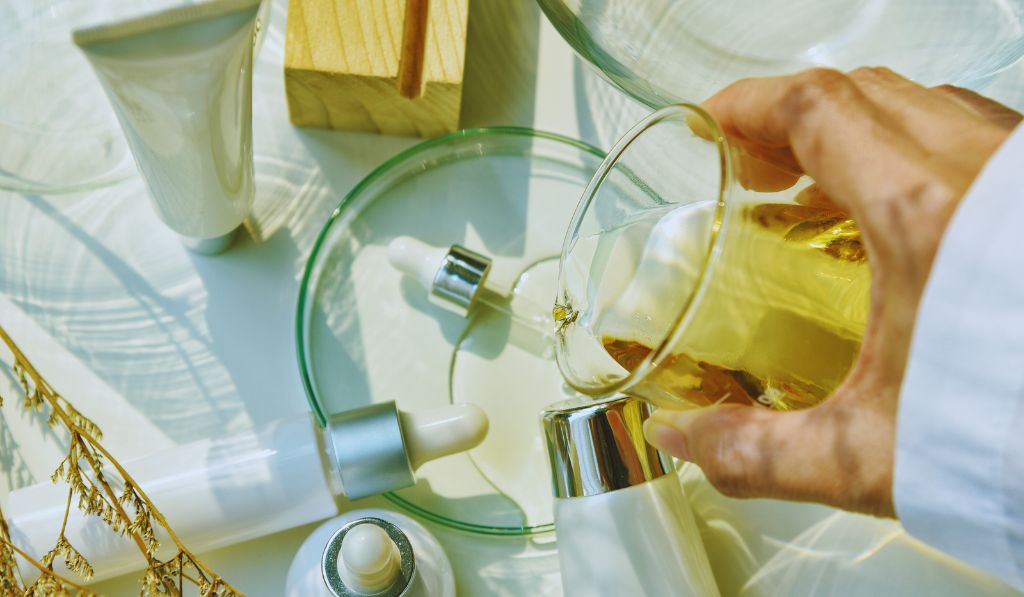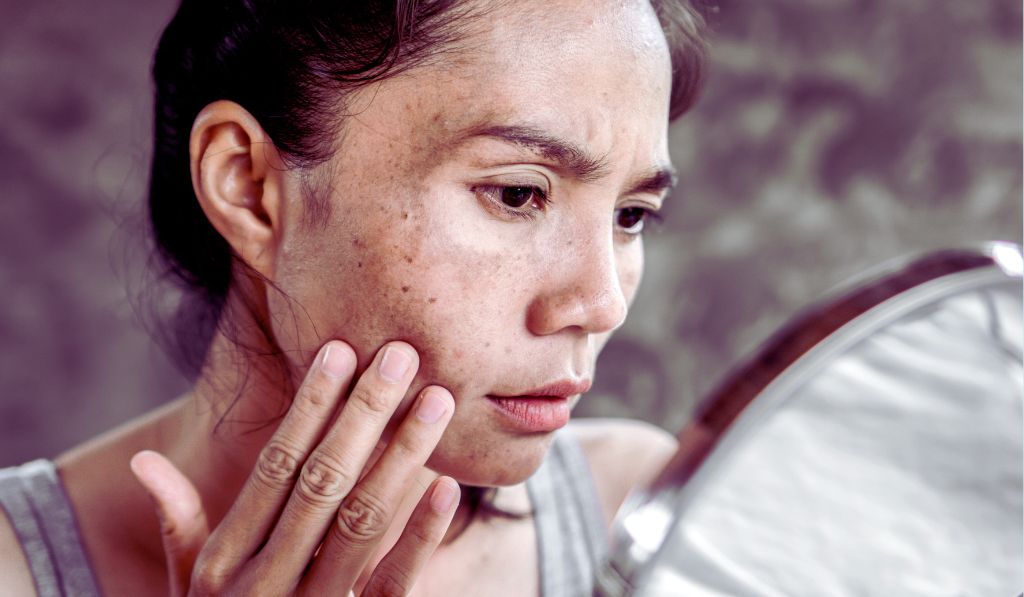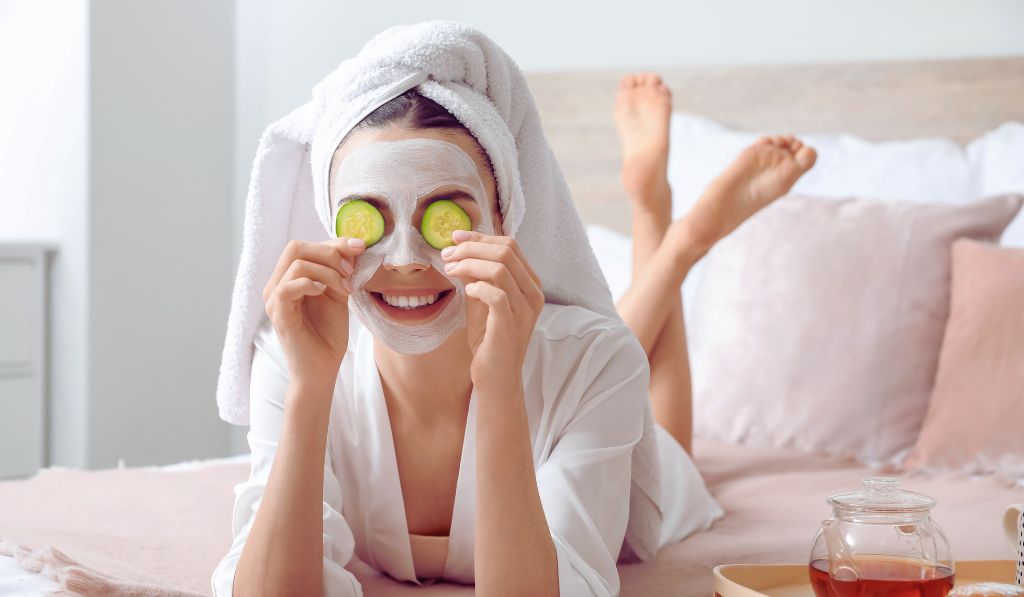Recent groundbreaking research has highlighted dangerous evidence that everyday beauty products contain carcinogenic chemicals, which risk millions of women.
Understanding these toxic ingredients and making informed about your skincare for an early routine has never been more important for your health and good.
Shocking study conclusion that changed everything
A comprehensive 2025 study has shown that common individual care products contain formaldehyde and formaldehyde-immunity to be known to the preservatives that millions of women apply daily to their skin.
Research found these dangerous chemicals in soaps, lotions and shampoos in many product categories, which increase serious concerns about long -term health effects.
Comprehensive analysis of the environmental work group found that 1,4-dioxanes appear in 28% of all individual care products, while more than 40% of products with shocking, “natural” effects were included in the same carcinogen.
This discovery destroys common misconceptions that natural or organic labels guarantee safety in beauty products.
Your beauty is the most dangerous chemical in the arsenal
Formladehyde and formaldhyde-reliefs preservatives
These powerful carcinogenous nail polish, baroni adhesive, hair treatment and even some foundations are hidden in the foundation.
Formaldehyde exposure increases the risk of cancer and causes severe skin irritation, making it especially dangerous for those who follow an early aesthetic routine that cannot identify warning signs.
Phthalates: hidden hormone disintegration
Research identified diethylhexyl phthalate (Dehp) at dangerous levels- 1019 μg/g-hair styling serum, especially used by those black women.
These chemicals act as endocrine disruptors, mimicking estrogen and potentially increasing breast cancer risk while affecting reproductive health.
Parabens: The Ubiquitous Preservatives
Scientific studies link parabens to hormone disruption, fertility issues, and increased cancer risk. These chemicals penetrate skin barriers and accumulate in body tissues, making them particularly concerning for daily skincare routines.
Heavy Metals and Contamination
Lead, mercury, and arsenic contamination appears in various cosmetics, especially lipsticks and eye makeup. These toxic metals accumulate in the body over time, potentially causing neurological damage and increasing cancer risk.
Why Women of Color Face Higher Risks
Research demonstrates that Black and Latina women experience disproportionate exposure to toxic beauty chemicals.
Hair straightening products, skin lightening creams, and specialized hair care products often contain higher concentrations of dangerous ingredients.
The Sister Study specifically linked chemical hair straightening products to increased endometrial cancer risk in African American women, while adolescent permanent hair dye use correlates with pre-menopausal breast cancer risk. This disparity highlights the urgent need for safer formulations across all beauty product categories.
Decoding Product Labels: Red Flag Ingredients to Avoid
When building your easy skincare routine, scrutinize ingredient lists for these dangerous compounds:
Immediate Concerns:
- Formaldehyde, formalin, methylene glycol
- Quaternium-15, DMDM hydantoin, imidazolidinyl urea
- Dibutyl phthalate (DBP), diethylhexyl phthalate (DEHP)
- Methylparaben, propylparaben, butylparaben
- Toluene, benzene, coal tar dyes
endocrine disruptors:
- Triclosan in antibacterial products
- Oxybenzone and octinoxet in sunscreen
- Synthetic aroma (often listed as “parfum”)
- BHA and BHT Conservator
Build a safe beginner beauty routine
There is no need to sacrifice the result to create an effective, non-toxic beauty regimen. Pay attention to these proven strategies:
Morning routine essential:
Start with a soft, fragrant cleanser with minimal content. Choose mineral-based sunscreen with zinc oxide or titanium dioxide instead of chemical UV filters.
For beginners, a simple routine works best – genuine people, moisturizers, and sun protection form the foundation of healthy skin.
Evening Care Protocol:
Remove makeup with oil-based cleanser free from synthetic aroma. Follow with alcohol-free toner and moisturizer that contain natural ingredients such as hyaluronic acid, ceramides and plant-based oils.
Product Selection Strategy:
Research brand using the skin deep database of the environmental work group, which evaluates more than 62,000 products for safety. Priority to companies with transparent component sourcing and third-party test protocols.
Regulatory Difference: Why Dangerous Products remain legal
The United States lagged behind the European Union standards for cosmetic security. While the European Union has banned more than 1,300 ingredients from individual care products, the FDA has banned only 11 substances.
This regulatory inequality means that American consumers are in touch with many carcinogenes, which other countries have considered very dangerous for cosmetic use.
The cosmetic industry is largely self-regulated, in which companies determine their own safety standards.
This system allows the potentially harmful material to reach consumers without comprehensive safety testing, which creates a public health crisis hidden in plain vision.
Read also: 8 Proven Strategies to Manage Blood Sugar Effectively in 2025
Cancer Risk Evaluation: Understanding Your Risk
The daily application of many beauty products creates cumulative chemical risk that may exceed safe levels.
The average woman uses 12 individual care products per day, which consists of more than 160 unique chemical compounds. This chemical cocktail effect is largely unstable, causing individual risk evaluation challenging.
Factors enhancing your cancer risk include:
- Frequency of product use
- Concentration of toxic components
- Period of risk over years
- Individual genetic sensitivity
- Combined performance from several sources
Safe Shopping: How to identify non -toxic beauty products
Certification Program for Trust:
See USDA Organic, EWG verified, or Cosmos Certificate. These third-party verification ensures that products meet strict security standards and contain minimum synthetic chemicals.
Effectively read label:
The small component list usually indicates safe yogas. Avoid products listing “fragrance” or “perfume” without specifying components, as these words often hide hundreds of unused chemicals.
Ways of brand research:
Investigate the company’s transparency about component sourcing, manufacturing processes and safety testing. The iconic brands provide detailed information about their formulation philosophy and test protocols.
Hidden threats in specific product categories
Child Care Products: Maximum Risk Area
Hair straightening meets the highest risks of cancer due to treatment and permanent dyes of formaldehyde exposure and prolonged skin exposure. Chemical relaxers especially threaten women of color, which use these products more often
Nail products: unseen dangers
Nail polish, acrylic, and Strongers often contain toluene, formaldehyde, and debatable fleets – known as “toxic trio”. Regular salon exposure increases these risks, especially in a poorly ventilated environment.
Anti-aging products: irony risk
The irony is that youth and health promise products often have the most dangerous chemicals. Anti-aging creams often include hydroquinone, retinoids, and alpha hydroxy acids that can increase the risk of photoscience and cancer with prolonged use.
Read also: 5 Critical Warning Signs Your Mental Health Is Declining in 2025
Expert-discriminated options for safe beauty
Clean skincare swap
Change the traditional moisturizer with products with natural ceramides, squalane and plant-based antioxidants. Choose vitamin C serum obtained from natural sources instead of synthetic ascorbic acid yogas.
Makeup option
Mineral makeup provides excellent coverage without synthetic dyes, fragrances or preservatives. Brands that focus on clean yogas provide everything from the foundation to lipstick using iron oxide, asbestos and plant-based materials.
Diy beauty solution
The simple homemade option completely eliminates chemical risk. Coconut oil acts as an effective makeup remover, while honey and porridge make gentle exfoliating masks suitable for sensitive skin.
Future approaches: industry change and consumer power
Consumer awareness conducts important industry changes. The major beauty corporations now invest heavily in clean yogas, responding to the demand for transparency and security. However, “greenwashing” is prevalent, which has companies using misleading marketing while maintaining harmful component profiles.
Regulatory pressure increases as more studies connect cosmetic chemicals with cancer.
Effect of real life: a personal wake-up call
28 -year -old marketing professional, Sara, experienced the dangers of toxic beauty products. After using a popular anti-aging serum for six months, he developed frequent skin rashes, hormonal imbalances and unexplained fatigue.
“I was using this expensive skincare product religiously, thinking that it would improve my skin,” Sarah Remember. “Instead, I started getting serious reactions and my period became irregular.”
When her symptoms deteriorated, Sara immediately consulted her dermatologist, who identified the culprit: a serum that had high levels of parabens and synthetic aroma.
After closing the product and switching to a clean, toxin-free skincare routine, its symptoms gradually disappeared in three months. “My doctor explained that my body was essentially being poisoned through my skin,” she says. “Now I am completely cured, but it was a scary awakened call of what we are really putting on our body.”
This real experience shows why the component awareness matters – through beauty products toxic exposure can cause immediate health problems that require medical intervention.
Taking action: protect your health today
Immediate steps protect your health by supporting safe industry practices:
Product Audit:
Review your current beauty collection using component-zancha apps or databases. Gradually replace high-risk products with safe options.
Simplified routine:
Reducing the amount of the product reduces chemical risk. Focus on multi -purpose objects with clean component profiles.
Advocacy and Awareness:
Support the law required for strict cosmetic safety standards. Share information with friends and family to expand awareness about these important health issues.
Frequently Asked Questions
Do beauty products cause cancer?
Research rapidly combines specific chemicals for cancer development in beauty products. While individual risks vary, carcinogens such as formaldehyde, athletes, and cumulative risk for heavy metals in cosmetics can contribute to the risk of cancer over time.
Which chemicals are associated with cancer in cosmetics?
Most of the maximum formaldehyde (in nail products and hair remedies), 1,4-dioxens (in shampoos and cleanser), phthalates (in aroma), parabens (in patron), and various makeup products include heavy metals in various makeup products.
Are my skincare products safe?
The product safety depends on specific ingredients and use patterns. Check the formulation using EWG skin deep database, avoid synthetic aroma products, and choose a brand with transparent component sourcing and third-party testing.
To avoid toxic ingredients in makeup
List of priority avoiding includes formaldehyde, phthalates, parabens, synthetic aroma, talc, lead, mercury, coal tar dies, triclosan and oxybenzone. Always read full component lists instead of relying on front-labeled claims.
What are carcinogens in beauty products?
Aesthetic products are carcinogenous cancer -causing chemicals that penetrate the skin and accumulate in body tissue. General examples include formaldehyde in nail treatment, 1,4-dioxains in foaming products and heavy metals in stained cosmetics.
How to check that a beauty product is toxic?
Use resources such as the skin deep database, the skin deep database, full component lists, research on individual chemicals, certified organic or EWG verified products, and avoid items with synthetic aroma or long chemical names.
Is the talc in makeup dangerous?
Talc causes the risk of cancer due to potential asbestos contamination during mining. While cosmetic-grade undergoes talc testing, many health experts recommend avoiding talc-containing products, especially the powder applied near the face and genital areas.
Do hair color cause cancer?
Permanent hair dye consists of an increase in risk of cancer, especially bladder cancer and chemicals associated with non-Hodkin lymphoma. Professional painters face high risk risks, while frequent personal use can also increase cancer sensitivity over time.
Conclusion
The beauty industry continues to change towards safe yogas, but consumer vigilance is necessary. By understanding these risks and being informed, you can maintain an effective beauty routine, protecting your long -term health.
Remember that knowledge strengthens better decisions – use this information to create a safe, more conscious approach for personal care that prefers both beauty and goodness.



